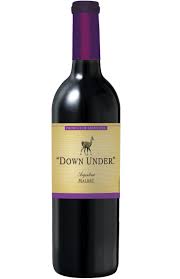When You Pay More, EVERYTHING Tastes Better
 One of my favorite marketing “Ps” has always been pricing. The psychology of how pricing works continues to fascinate me and it should be interesting to you blog readers out there too since we all have to reconcile pricing on a daily basis. A couple of recent studies illustrate some good points re: pricing.
One of my favorite marketing “Ps” has always been pricing. The psychology of how pricing works continues to fascinate me and it should be interesting to you blog readers out there too since we all have to reconcile pricing on a daily basis. A couple of recent studies illustrate some good points re: pricing.
New Pricing Rule #1 — When you pay more, it tastes better?
That’s madness, you say! Well, a recent experiment from two researchers at the University of California-San Diego really illustrates some key learning for marketers out there. Ayelet and Uri Gneezy from the University of California, San Diego, teamed up with a winery owner in their state to figure out, experimentally, the best price for his Cabernet. On some days they sold the wine for $10, on others for $20 or $40. Demand fell off at $40, but the winery sold more bottles of its Cabernet when the price was $20 than $10. And the customers who paid more indicated that the wine tasted better! Oh yeah, we humans is crazy like that.
New Pricing Rule #2 — Customers Today Seem to Prefer Round Numbers
Wait, so they aren’t falling for the wildly imaginative $9.99 is cheaper/different than $10.00 anymore? Well, darn…back to the drawing board. How can we tell? Well, by looking at data from “pay what you want” purchases on the Web out there whether it be music from artists like Radiohead or Prince, art or even a physics-based game called “World of Goo” (ew), customers when they get to choose a price, choose a round number. Here’s the most striking statistic: 57 percent of consumers picked round, whole-dollar amounts ending in zero, and an additional 4 percent chose to pay round, half-dollar amounts.
Every company has to choose/set a price for its offerings. Sure it starts with costs, but please don’t forget to incorporate brand value and the customer’s own story into the pricing discussion. I recently gave a talk about emotional branding to a group of professional service providers (lawyers, financial planners, CPAs, etc) and wasn’t at all surprised to find that their brands were largely surface-level messaging and that means their pricing is probably set right at market levels. And that’s fine.
But when you connect more deeply at the emotional level and let the customer bring in their story and choose the price, guess what? You can charge more and the customer will be happier about it. If your company is struggling with pricing or any of the other marketing “p’s” as always, we’re here to help. You will find us shopping for the $20 bottles of Cabernet which you won’t be able to convince us don’t taste better than the $10 ones. 🙂

